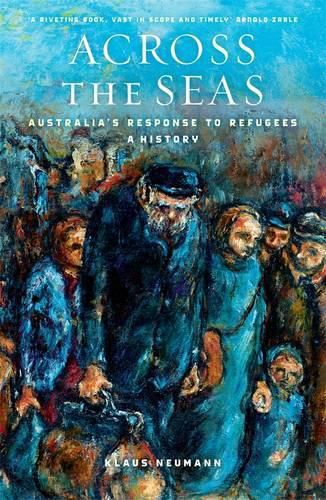The story behind my book
I became first interested in the history of Australia’s response to refugees and asylum seekers fourteen years ago. What interested me at the time was that a small group of immigrants who had arrived in Australia in the second half of the 1930s were declared ‘enemy aliens’ during the Second World War on account of their nationality, and were then interned. They had come to Australia in search of protection, and were locked up during the war because they could be ‘reasonably suspected as being likely to act in a manner prejudicial to the public safety or the defence of the Commonwealth, or as being likely to cause disaffection’.
In other words, the government interned people also to appease public opinion.
In the late 1930s and early 1940s, some Australians stood up for the rights of people who had come to Australia as refugees and had no intention to assist the country they had fled. But numerous others demanded the wholesale internment of all Germans, Italians and Japanese, regardless of when they had arrived in Australia and whether or not they had been naturalised. Those calling on the authorities to intern their German- or Italian-born neighbours also rarely made a difference between ordinary immigrants and refugees.
In government archives, I read the resolutions of local councils that called for the internment of all enemy aliens, and letters whose anonymous authors denounced their workmates for unpatriotic conduct. Back at home, I listened to callers on talkback radio who congratulated the government for refusing to let the Tampa disembark asylum seekers it had rescued in the Indian Ocean, and for taking them and others who were seeking Australia’s protection to camps in Nauru and Papua New Guinea.
In 2001, both the government and refugee advocates regularly invoked Australia’s supposedly ‘proud’ record in responding to refugees and asylum seekers: the former to justify a hard-line approach, and the latter to claim that the Howard government’s policy was an unfortunate aberration. I wondered, was Australia’s record as ‘proud’ as the government and its detractors claimed? And had Australians traditionally been welcoming to strangers, including those who came to Australia in search of protection?
My research suggested that neither was the case, and that it would be useful to inform public debate by writing about the history of Australia’s response to refugees and asylum seekers. But attempts to identify ‘better’ or ‘worse’ responses are perhaps not all that helpful: they tend to be designed to make statements about us – to make us feel ashamed or proud – and don’t advance the discussion about the complex issues of forced and irregular migration.
Rather than evoking supposedly better times, or charting the progress we have allegedly made since Federation in our response to asylum seekers and refugees, Across the Seas includes incidents in the past that allow us to see the present in a new light, trying to show how Australia’s approach was radically different in previous times, and identifying continuities and parallels. Thus I have written about the Australian-run camps for asylum seekers on Manus Island – the detention centres operating between 2001 and 2008, and again since 2012, and the camp set up by the Australian government in 1968.



